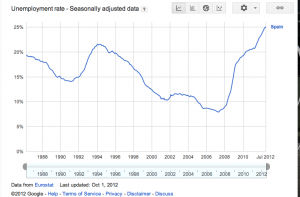The smartphone market is going to be hit by a new heat wave at the end of the month–the Samsung Galaxy Note II. If you don’t know about its predecessor, the Note I, to have a general idea of this new product, this is a pretty decent approach: you drop the phone, you might kill a small dog.
The phone has a massive 5.5” screen which makes it genuinely impossible to be fit into most pockets. So what makes people want to buy this “bigger than an iPhone but not yet an iPad” phone? The value proposition of Note II seems to be stuck in between the one of a smartphone and a tablet.
However, Samsung has found a spot somewhere on the scale for this giant phone. It is a phone to give its owner an experience beyond a smartphone yet the owner is not burdened with the weight of a tablet. All in all, it is the solution for those who want both but would only pay for one.
If the Galaxy Note II turns out to achieve another successful sale, it might be a good idea to try proposing a product in the middle of a spectrum when both sides are occupied already.
Oct. 18, 2012. Akkad, Omar. <http://www.theglobeandmail.com/technology/gadgets-and-gear/gadgets/galaxy-note-ii-a-giant-stretch-of-the-word-phone/article4621461/?page=2>




